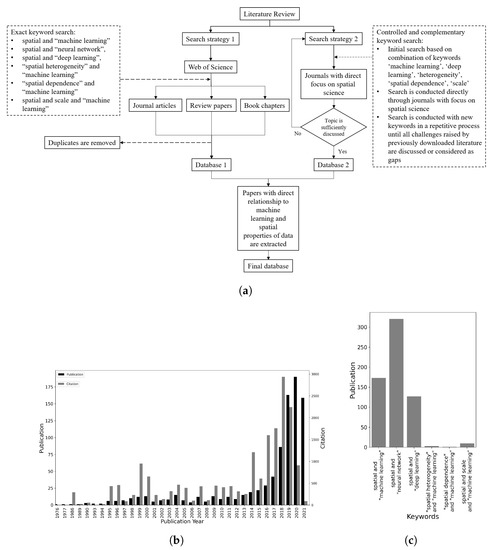Machine Learning of Spatial Data §

Highlights §
- In the first, the properties of spatial data are developed in the spatial observation matrix without amending the substance of the learning algorithm; in the other, spatial data properties are handled in the learning algorithm itself. While the latter have been far less explored, we argue that they offer the most promising prospects for the future of spatial machine learning. (View Highlight)
- Spatial data exhibit certain distinctive properties that set them apart from other data types, such as spatial dependence, spatial heterogeneity, and scale. As in other modeling approaches, we need to be aware of the specificities that these properties entail when we conduct ML on spatial data. Indeed, the explicit handling of these spatial properties can improve the performance of the ML model or add meaningful insights into the process of learning a task. At the same time, failure to appropriately include these properties into the ML model can negatively impact learning [11,21,22,23,24,25,26]. (View Highlight)
- there is extensive literature that applies ML to spatial data but research that explicitly features the spatial properties of data in ML remains rather limited. Thus, this paper aims to review some of the best recent practices with ML of spatial data while considering the learning process and the properties of spatial data for the purpose of full understanding: (View Highlight)
- In machine learning, observations are represented by a matrix X where the rows are instances (samples) of a phenomenon under study, and columns are different attributes associated with each of these instances. The same applies to spatial data, but the samples on each row are also referenced to a specific location in the geographic space. To define the relationship between the real world and this matrix, we can choose between two well-known views of the world, namely, the field view or the object view [42]. Field entities are usually represented by regular grids and object entities by points, lines, or polygons. Being referenced to a specific location in space creates unique properties for spatial data that geographers and econometricians have studied over the years [43,44,45]. There is a broad agreement in the literature that there are three fundamental properties for spatial data: spatial dependence, spatial heterogeneity, and scale. (View Highlight)
